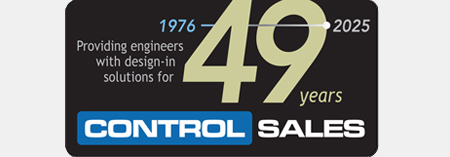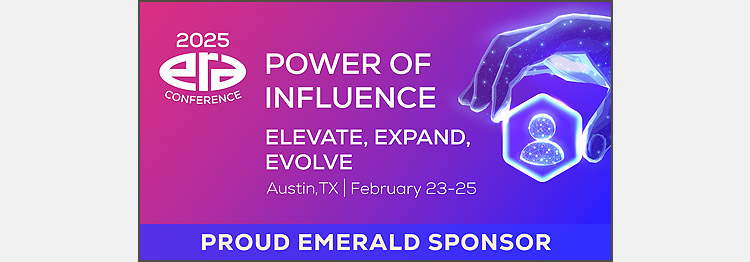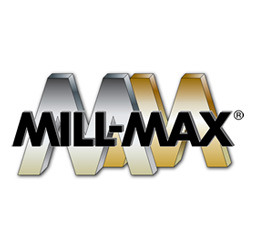
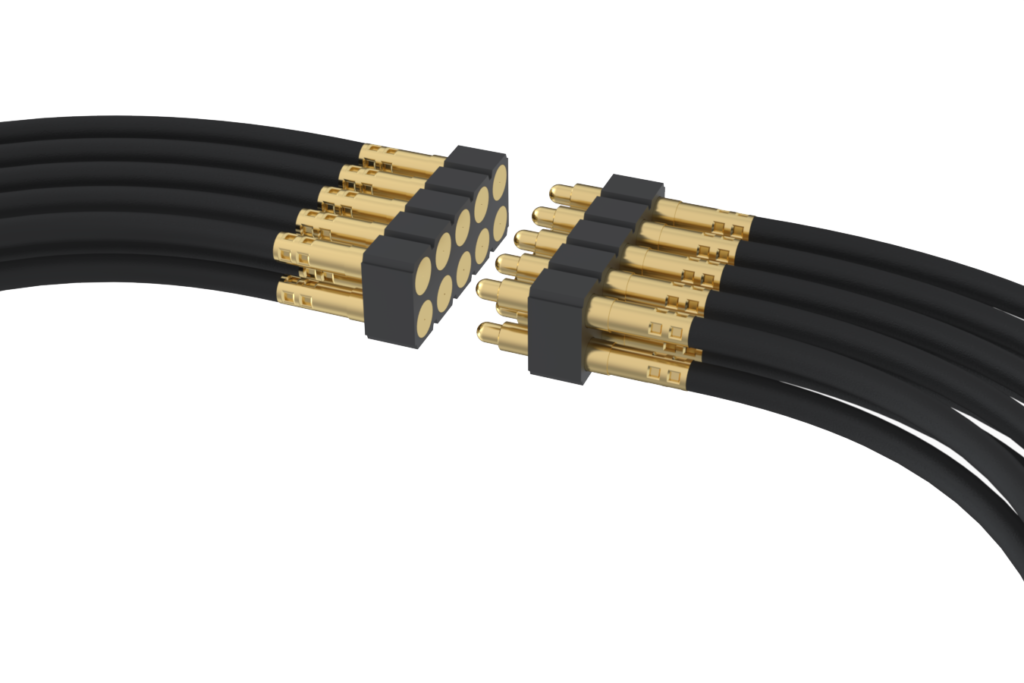
Introducing double row pre-wired connectors in both spring-loaded and target versions. These products combine high quality Mill-Max pins with the convenience of an 8” pig-tail to suit a wide variety of applications.


Introducing double row pre-wired connectors in both spring-loaded and target versions. These products combine high quality Mill-Max pins with the convenience of an 8” pig-tail to suit a wide variety of applications.

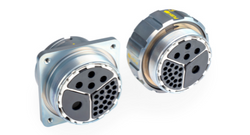
The MOVE-MOD™ series provides the ultimate in modularity and flexibility by utilizing a range of snap-in modules that enables a variety of contact layouts and the ability to deliver power, signal and data in the same connector. Toolless assembly and installation makes MOVE-MOD extremely quick and simple to work with, and the minimized component requirement delivers cost and time efficiencies throughout the supply chain.
Learn more at ittcannon.com
Control Sales proudly announces the addition of Mike Marshall as the new Account Manager for the Southeast Wisconsin territory. Mike comes from TTI, Inc. in Brookfield, Wisconsin where he was a field sales representative with an impressive growth track record.
Mike comments “I am excited to start a new challenge as a manufacturers’ representative at Control Sales. From my roles at TTI, I bring sales experience with many of Control Sales lines including ITT Cannon, Panasonic, C&K, and Sensata. Also, I have been working with customers in the territory for over four years. I am eager to leverage my experience into the rep sales model where I can work closely with engineers to deliver high-value, design-in solutions.”
Kingsland Coombs, President of Control Sales, said “We are very proud to announce the addition of Mike to our team. He is a proven electronics sales professional who comes with industry knowledge and customer experience. More importantly, he has the energy, enthusiasm, and flexibility necessary for selling in an industry undergoing growth and change. Mike has tremendous potential and I look forward to helping him succeed.”
Mike can be reached at 414-313-9787 or mmarshall@controlsales.com.

Article Published in The Representor Fall 2021
Author Kingsland Coombs
President, Control Sales, Inc
We need to have a conversation about virtual meetings. From my perspective, there are far too many virtual calls that still have the feel of a technology thrust upon us during dark times. Something reasonably effective, but a temporary substitute for “real” selling. Alas, we have come to realize that virtual calls are here to stay no matter what happens with Covid. They are efficient, effective, and many customers PREFER them. So, why haven’t we 100% embraced this medium and become experts?
Aren’t we in the business of selling our brand, our manufacturers’ brand? How is that accomplished if we don’t present ourselves in the best possible way? In the ERA Virtual Training classes, a lot was discussed about best practices for virtual meetings. I will share three main thoughts with a focus on customer sales calls.
#1 Energy and Professionalism
We are now selling our brands through a virtual medium that is an invisible barrier to personal connections. Before Covid, our skillset included ways to maximize our physical presence with firm handshakes, food, eye contact, vocal tone, body language, and carefully reading a room. Are these skills suddenly less relevant? In fact, the opposite is true! We must enhance our skillset to create a virtual presence that achieves the same personal connections that our physical presence once did.
This begins with how we present ourselves on camera. Must the camera be on? Even if the customer’s is not? A thousand times yes! If you were invited to a face-to-face meeting, would you join via a conference call? Customers want to see your smiling faces no matter whether they have their camera on or not. Professional dress, personal grooming, and bright, flattering lighting will make you camera ready. Frame yourself so that your head and shoulders dominate the screen. Make sure the sound is clear. Your appearance matters in person and matters virtually as well.
Put everyone at ease by being relaxed and confident on camera. This can feel awkward at first, so practice. Smile and make eye contact by using the camera, not the monitor. Use hand gestures for emphasis and vary your vocal tone to keep your audience engaged. Share your personality by telling stories that help form connections and memories. Eliminate all distractions like notifications or noises to ensure your focus.
Importantly, bring your positive energy and enthusiasm. You may have to amp it up for it to translate virtually! Be willing to try new things and seek feedback and coaching.
#2 Follow the Scout Motto “Be Prepared”
The best salespeople prepare for a call. Virtual calls require extra planning to compensate for the loss of the natural conversation when meeting in-person. We need to replace the quick glance around the customer’s office for clues about common interests and the impromptu factory tour that provided more ways to sell our line card. Instead, we do more research before the call.
Ask questions, review websites, scrub your CRM data. When reviewing websites, focus on the customers’ products you are confident are designed in your area. Try as best you can to break down the product in your mind and how it relates to your line card. A block diagram visual is a method to help focus your thoughts. Then, prepare meaningful visual content and possibly invite a technical expert from the factory to join the meeting. Also, leverage modern search tools to learn about your audience and find personal connections through previous positions, companies, achievements, or interests.
Virtual calls are time sensitive. Create a meeting agenda in 10-to-20-minute increments with time to establish rapport and wrap up. Be prepared to shrink or expand call length depending on last minute customer requests with a plan B,C, and D.
#3 Display Competence
You have one chance to make a first impression and fumbling through a virtual meeting is not the way to gain confidence. Practice, practice, practice all aspects of virtual meeting technology. Nothing is worse than an unforeseen delay that causes participants to drop off the call.
Know the meeting platform ahead of the call or be sure to practice before the meeting. Master the virtual meeting essentials: seamless screen sharing, file sharing, and website navigation via a good connection with fast internet speeds and clear audio. If you are hosting a larger meeting, why not include Chat? Chat allows a level of participation often not seen in face-to-face meetings.
Embrace Change
The sale is the same, only the tools are new. Now you can meet with more people in less time and do it from almost anywhere. In the long run, virtual technology will gain you access to more stakeholders. It is time for account sales representatives to be THE experts in virtual sales calls.
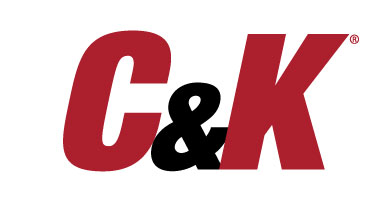
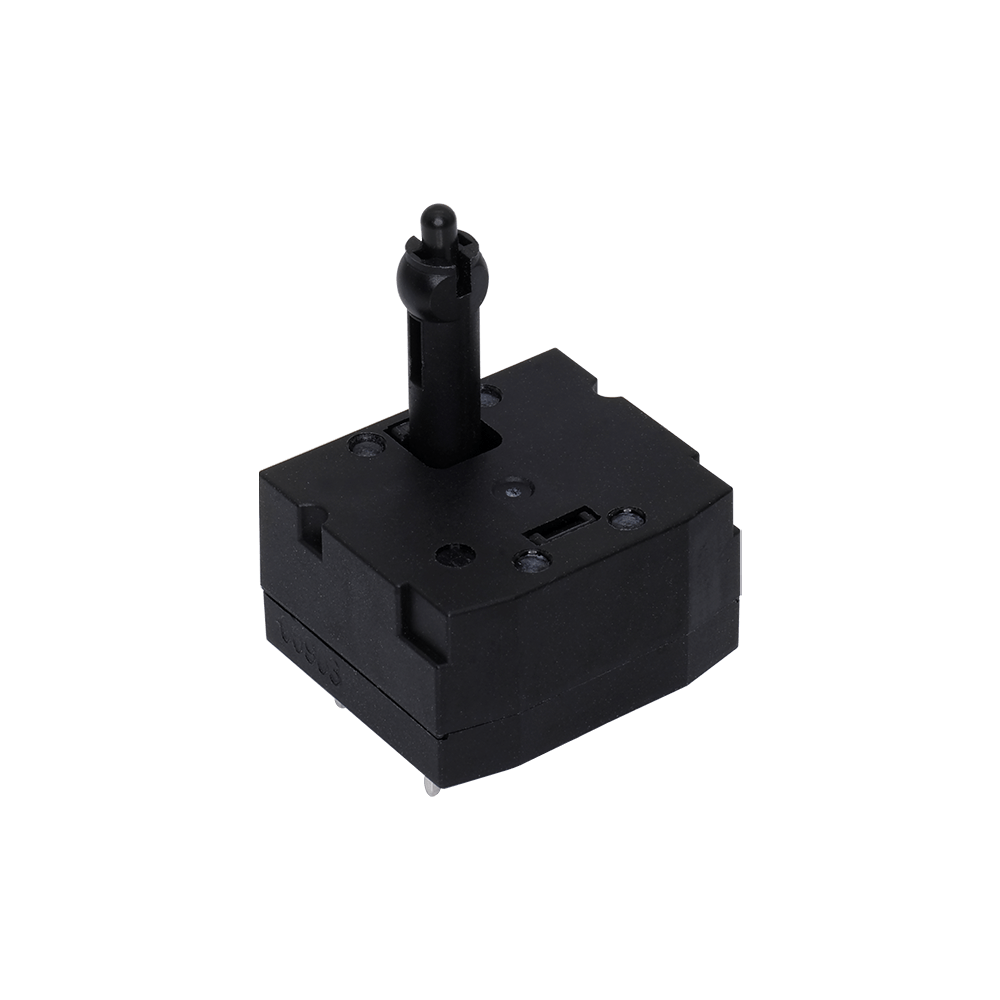
C&K’s SAMXD Series is a multiway navigation switch in our product line. These multiway switches allow for ideal for automotive applications in interior control.
The SAMXD series are designed for a variety of applications in the automotive, industrial, and transportation markets. A couple example of uses of these switches would be in automotive seat controls, and industrial joysticks.
Learn more at ckswitches.com and watch the video on YouTube.

Harsh environment applications exist across many conditions including underwater, moisture, corrosive, extreme temperature ranges, dust/sand, shock, and even constant G force. These conditions are often categorized as extreme temperature, chemical, particulate or mechanical, and they can create thermal issues for design engineers.
Watch our product training module (featured above) for more insight into how Orion Fans products exceed the capabilities of industry-standard fans and provide engineers with solutions for harsh environments.
Want to know more about Harsh Environment Thermal Management products? Watch the video here or see the full line of harsh environment products at orionfans.com.
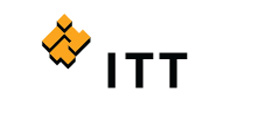
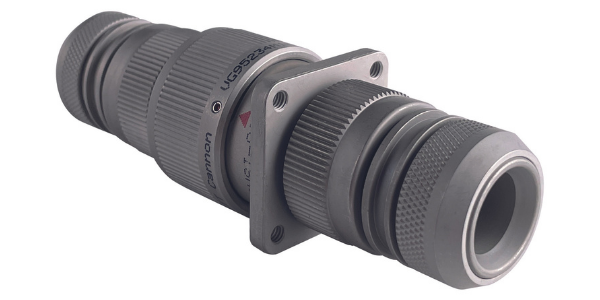
ITT Cannon’s Tin Zinc J Plating is an ultra-harsh environment formulation that meets or exceeds the VG (German Military) performance requirements of cadmium. It is a highly conductive (< 5m ohm) and corrosion-resistant (500 hours static / 5 days cyclic salt spray) matt grey, non-reflective solution.
Learn more at ittcannon.com

Light for Living | Light for Working – Our latest newsletter just released with links to your FAQs and our new product offerings. https://lnkd.in/gCKcb_z
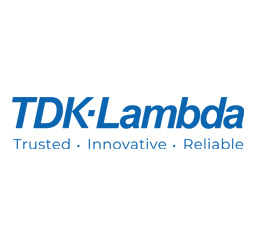

TDK Corporation announces the introduction of the high voltage output CHVM series of DC-DC converters. Capable of operating from a nominal 12V input, these non-isolated converters deliver output voltages ranging from 180V to 2,000V. Low output ripple and noise is achieved through the use of a metallic case that provides five-sided shielding to reduce radiated emissions. The CHVM has been designed for use in noise sensitive applications, including photomultiplier tubes, photodiodes, scanning electron microscopes, X-ray fluorescence spectrometers, mass spectrometers and ultrasonic probes.
Learn more at us.lambda.tdk.com

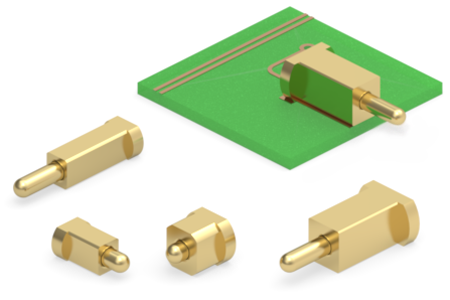
Mill-Max has developed a versatile line of horizontal surface-mount (HSMT) spring-loaded pins designed for making low profile connections parallel to the board surface. These spring-loaded pins have plunger travel in-line with the board surface, making them ideal for end-to-end board connections in assemblies with restrictive height requirements.
Learn more at mill-max.com
